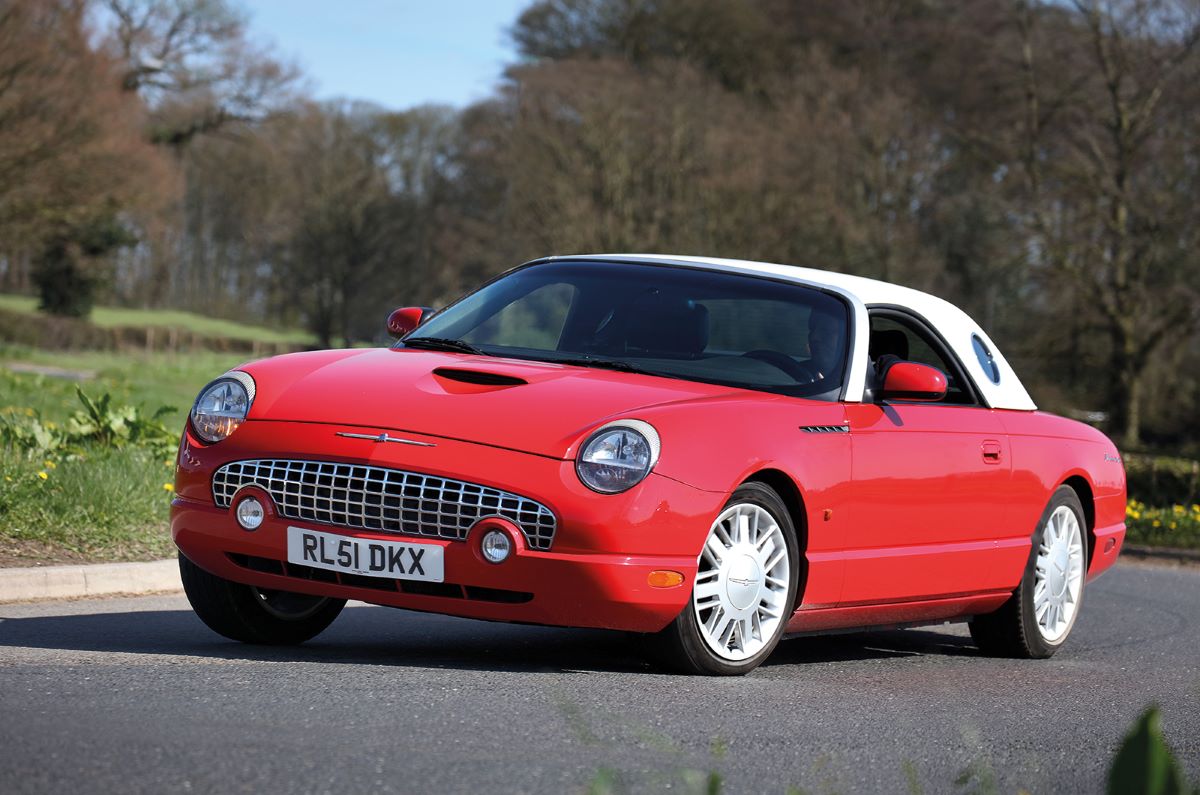In the ever-evolving world of automotive design and branding, resurrection stories are surprisingly common. Automakers, always keen to capitalize on nostalgia or revitalize a struggling lineup, often dip into the archives to bring back once-popular nameplates.
The strategy is simple in theory: take a beloved model, update it for modern sensibilities, and reignite the passion of loyal fans — all while attracting a new generation of buyers. But the results are far from predictable.
While some comebacks have roared back to life with fresh energy and relevance, others have stumbled, tripping over either bloated expectations, poor execution, or a market that simply moved on.
There’s a certain romanticism around automotive revivals. It taps into the emotional connections people have with cars they grew up with, cars their parents drove, or even dream cars that once adorned posters on bedroom walls. When done right, a revived model doesn’t just sell — it creates buzz, boosts brand identity, and often defines an era anew.
Cars like the Dodge Challenger or the Toyota Supra didn’t just return; they came back swinging, infusing old-school DNA with modern performance and tech. These revivals honored their legacy while also standing tall in today’s competitive market.
But for every hit, there’s a miss — sometimes a spectacular one. Bringing back a nameplate is not a guarantee of success. In some cases, manufacturers have misread the market or leaned too hard on nostalgia without offering enough substance.
Others fell victim to bad timing, poor engineering decisions, or lackluster designs that failed to resonate. Models like the Ford Thunderbird’s early-2000s revival or the misjudged Mitsubishi Eclipse Cross tried to ride the coattails of past glory but faded back into obscurity — or worse, hurt the brand’s credibility.
In this article, we’ll look at five car models that came back stronger than ever, earning praise, sales, and a place in modern automotive culture — and five that flopped again, despite the hype. Buckle up — we’re about to hit the gas on some serious revival stories.
Also Read: 5 Cars That Have Grown More Reliable and 5 That Fell Off

1. Dodge Challenger (Resurrected in 2008)
When Dodge brought back the Challenger in 2008, it was more than just a nostalgia play — it was a bold statement. The original Challenger of the 1970s was a muscle car icon, and when the modern version roared back onto the scene, it captured that same raw energy with updated engineering and performance.
Dodge knew its audience: muscle car fans who wanted aggressive styling, big horsepower, and that old-school American vibe. The reborn Challenger delivered all of that and more. It launched with serious power under the hood, including a HEMI V8, and it stood out from competitors by staying true to the retro aesthetic that had defined its golden-era predecessor.
Part of the Challenger’s success lies in how Dodge treated the revival not as a one-off gimmick, but as a long-term investment. Over the years, they expanded the line with high-performance trims like the SRT Hellcat and Demon, pushing horsepower into the realm of supercars while maintaining relatively affordable price points.
Even as muscle cars became a niche market and other competitors dropped out or changed directions (looking at you, Mustang Mach-E), Dodge doubled down. The Challenger held its ground with a loyal fan base, regular performance upgrades, and a marketing strategy that leaned heavily into its rebellious identity.
As of the mid-2020s, the Challenger remained one of the best-selling two-door cars in the U.S., proving that there’s still strong demand for brute-force American muscle when it’s packaged right. Its resurrection wasn’t just a hit — it was a cultural phenomenon that helped redefine Dodge as a brand.
Few revivals have stayed as close to their original DNA while still adapting successfully to modern demands. The Challenger’s ongoing success story is a textbook example of how to do a car resurrection right.

2. Toyota Supra (Resurrected in 2019)
Few names stir up car enthusiast emotions quite like the Toyota Supra. When Toyota discontinued the Supra in 2002, it left behind a cult following and a gap in the performance car scene. For years, fans pleaded for its return, and in 2019, their wishes were finally answered.
The new A90 Supra was a collaboration between Toyota and BMW, sharing its platform and powertrain with the BMW Z4. That decision sparked some controversy, but the final product proved to be an agile, powerful, and well-balanced sports car that honored the Supra name.
Toyota faced the difficult challenge of reviving a legend without alienating its hardcore fan base. The old Supra, especially the MK4 from the ’90s, was a street-racing icon known for bulletproof reliability and limitless tuning potential.
While the 2019 Supra was a very different animal — more refined, more European — it offered exceptional performance and was an absolute blast to drive. It came with a turbocharged inline-six (like the old days), rear-wheel drive, and razor-sharp handling, making it a worthy successor for both purists and modern sports car lovers.
Over time, Toyota continued to evolve the model with more horsepower, better suspension tuning, and even a manual transmission, answering one of the biggest complaints from die-hard fans.
The Supra’s return wasn’t just about bringing back a badge; it was about rekindling a flame and showing that Toyota could still make enthusiast cars in an age of crossovers and hybrids. It may not be exactly the Supra of old, but it carved out a strong identity of its own, securing its place in the modern performance lineup.

3. Jeep Gladiator (Resurrected in 2019)
The original Jeep Gladiator pickup disappeared in the late 1980s, but the concept lived on in the hearts of off-roaders and adventure seekers. Jeep finally answered the call in 2019, reintroducing the Gladiator as a Wrangler-based midsize pickup.
It combined the rugged, go-anywhere capability of the Wrangler with the utility of a truck bed, offering a unique value proposition in the growing midsize truck market. At first glance, it looked like a stretched Wrangler with a bed, but Jeep engineered it to be much more.
Under the hood and chassis, the Gladiator packed legitimate truck credentials: solid axles, excellent towing capacity, and serious off-road hardware. It retained removable doors and a fold-down windshield, giving it the kind of open-air driving experience no other truck could match.
Jeep was careful to position the Gladiator not just as a Wrangler variant, but as a true lifestyle vehicle. It appealed to weekend warriors, overlanders, and anyone who wanted to haul gear into the wild without compromising capability.
Critically and commercially, Gladiator performed well, carving out a solid niche in a competitive segment. It didn’t outsell Ford or Chevy, but it didn’t need to — it was the only truck offering the full Jeep experience.
Its success showed how a revived model could strike a perfect balance between heritage and modern needs, especially when executed with authenticity and purpose. The Gladiator wasn’t just a clever comeback — it was a strategic win that strengthened Jeep’s brand identity.

4. Mini Cooper (Resurrected in 2001)
When BMW brought back the Mini Cooper in 2001, they weren’t just reviving a car — they were relaunching an entire brand. The original Mini, a British icon from the 1960s, was known for its compact size, cheeky personality, and surprisingly good performance.
BMW’s resurrection kept the charm while dramatically updating the styling, safety, and technology. It was bigger, safer, and more refined, but still unmistakably a Mini.
The timing couldn’t have been better. Small cars were in vogue again, and BMW positioned the Mini as a premium compact — stylish, fun, and different from everything else on the road. From the get-go, the new Mini Cooper was a hit. It offered sporty handling, a premium interior, and endless customization options.
The performance-oriented Cooper S added serious punch, while special editions and quirky marketing kept the car in the cultural spotlight.
More than two decades later, the Mini remains a global success. It’s become a lifestyle brand, expanding into multiple body styles like the Clubman and Countryman.
Though purists sometimes criticize the newer Minis for being “too big” or “too BMW,” there’s no denying the success of the revival. It took a beloved classic and turned it into a modern fashion statement — one with real driving credibility.

5. Ford Bronco (Resurrected in 2020)
Ford stunned the automotive world when it brought back the Bronco in 2020 after a 24-year hiatus. The original Bronco was a rugged off-roader that had faded into legend after production ceased in 1996.
The revived version, however, was a full-on off-road beast designed to take on the Jeep Wrangler directly — and it came out swinging. With retro-inspired looks, removable doors and roof, and serious off-road chops, the new Bronco wasn’t just a tribute — it was a declaration.
Ford gave the Bronco a full suite of off-road hardware: locking differentials, disconnecting sway bars, G.O.A.T. modes (Go Over Any Terrain), and beefy tires right from the factory. Buyers could choose between two- and four-door configurations, and there was even a smaller Bronco Sport to attract crossover buyers.
The attention to detail and respect for the original design showed Ford had done its homework, and the market responded with massive demand and long waiting lists.
The Bronco’s revival proved that with the right mix of nostalgia, performance, and smart branding, an old nameplate can become a new sensation. It didn’t just appeal to off-road fans — it reignited a rivalry with Jeep, created an entire line of adventure vehicles, and brought new energy to Ford’s SUV portfolio. The Bronco isn’t just back — it’s thriving.
5 car model revivals that flopped

1. Chevrolet SSR (Resurrected in 2003)
When Chevrolet rolled out the SSR in 2003, it was supposed to be a bold blend of retro styling and modern performance. Short for “Super Sport Roadster,” the SSR was a convertible pickup truck with wild 1950s-inspired curves and a retractable hardtop roof.
On paper, it sounded like a quirky hit — part muscle car, part hot rod, part utility vehicle. But in reality, it landed with a thud. The styling was polarizing, the concept confused buyers, and the performance didn’t live up to expectations.
The early models came with a 5.3-liter V8 that was more show than go, delivering sluggish acceleration in a vehicle that weighed over two tons. Later models improved with the inclusion of the LS2 V8 from the Corvette, but by then, the damage was done.
The SSR was expensive, impractical, and lacked a clear identity. It didn’t offer the hauling capacity of a truck, the fun of a sports car, or the comfort of a cruiser — it was a jack-of-all-trades, master of none.
Sales were poor, and the SSR was discontinued after just three model years. While it has gained a cult following in recent years for its uniqueness, at the time of its release, it was a marketing misfire.
Chevy’s attempt to revive the spirit of classic roadsters and pickups in a single vehicle just didn’t resonate with the broader market. The SSR proved that cool styling and nostalgia alone aren’t enough to sell cars, especially when functionality and performance take a back seat.

2. Mitsubishi Eclipse Cross (Resurrected in 2018)
The original Mitsubishi Eclipse was a beloved sport compact that enjoyed a strong run from the late 1980s through the mid-2000s. Known for its turbocharged power, sharp looks, and tuner-friendly nature, it was a staple in car culture, even appearing in the first Fast & Furious movie.
So when Mitsubishi announced the return of the “Eclipse” name in 2018, enthusiasts were excited… until they saw it. The Eclipse Cross turned out to be a compact SUV — a far cry from the coupe they remembered.
This rebadge wasn’t just a disappointment — it felt like a betrayal. Instead of a sleek sports car, Mitsubishi revived the Eclipse as a generic crossover with polarizing styling and middling performance. Critics slammed the vehicle not only for abandoning the spirit of the original but also for being underwhelming even by SUV standards.
It featured a modest 1.5-liter turbo engine and a continuously variable transmission (CVT) that offered little driving excitement. The interior felt dated, and the driving dynamics were uninspiring.
To make matters worse, Mitsubishi didn’t give the Eclipse Cross a unique identity of its own beyond the name. It lacked the innovation or stand-out qualities needed to compete in the saturated crossover market. The use of the “Eclipse” badge felt more like a desperate marketing move than a genuine revival, and it backfired.
Sales were lukewarm, and the model never gained the kind of recognition or respect that the original Eclipse had. It’s a textbook case of nameplate misuse — proof that not all legacies can be rebooted successfully.

3. Ford Thunderbird (Resurrected in 2002)
The Ford Thunderbird, a name synonymous with American luxury and elegance, had a storied history dating back to the 1950s. For decades, it stood as an iconic symbol of automotive design, embodying the era’s glamor and performance.
However, when Ford brought the Thunderbird back in 2002, the result was a massive disappointment. The revived model was radically different from its predecessors — and not in a good way.
Instead of retaining the T-Bird’s classic two-seater configuration or emphasizing the luxury and performance that had made it famous, Ford designed a much larger, heavier four-seater that seemed disconnected from its roots.
The model’s retro-styling was clunky, rather than sleek, and it felt like a shallow homage to the past rather than a genuine revival. It lacked the distinctiveness and panache that had once made the Thunderbird a star in the automotive world.
Sales numbers were dismal. Despite a high-profile launch, the Thunderbird failed to find its audience. It struggled to compete with more established luxury roadsters and coupes, and its appeal to younger buyers was minimal. Ford discontinued the model after just four years.
The Thunderbird’s resurrection is a cautionary tale in automotive history — a reminder that trying to revive a legend with superficial changes and a mismatched identity can backfire.

4. Chrysler PT Cruiser (Resurrected in 2000s)
The Chrysler PT Cruiser was initially hailed as a quirky and retro-inspired compact car that had potential. When it was first launched in 2000, its distinct, boxy design and 1930s-inspired looks set it apart from other vehicles on the market.
However, when Chrysler attempted to keep the PT Cruiser around through the mid-2000s with various refreshes and models, it quickly became clear that the “retro revival” was a one-hit wonder.
The PT Cruiser may have caught the public’s attention with its unique style, but it lacked the refinement and performance to back it up. It was slow, uncomfortable, and the interior quality did not match the premium vibe the brand attempted to sell.
Despite its potential as a quirky, affordable option for those seeking something different, the market quickly turned away as the novelty wore off. The revival had failed to create long-term appeal.
By the time Chrysler gave up on the PT Cruiser in 2010, it was a car that no longer seemed fresh or special. It had overstayed its welcome, and its sales plummeted as consumers opted for more reliable and better-performing small cars. The PT Cruiser is another example of how automotive nostalgia can be effective if executed well, but fails when a car does not deliver enough substance behind its retro aesthetic.

5. Honda Crosstour (Resurrected in 2009)
The Honda Crosstour was Honda’s attempt to enter the crossover SUV market in a more “premium” fashion. Launched in 2009, the Crosstour was essentially a hatchback version of the popular Honda Accord, with a higher ride height and rugged styling meant to appeal to buyers who wanted more space and versatility without abandoning the sedan’s refined feel. Honda even tried to market it as a unique hybrid of sedan and SUV, offering something for every driver.
Unfortunately, the Crosstour never quite found its footing. It was an awkward blend of two genres — not quite a sedan, not quite an SUV — and the design was polarizing.
Buyers who were interested in Honda’s sedan lineup found the Crosstour too big and bulky, while SUV buyers weren’t interested in a car that was less versatile and lacked the off-road capability of more rugged crossovers. Its styling, which featured a sloping rear roofline, was met with criticism, and the car didn’t offer enough of a performance boost to justify the higher price.
Despite Honda’s reputation for producing reliable, practical cars, the Crosstour ended up as a slow-seller, and the model was discontinued in 2015 after a lackluster sales run.
Its failure serves as a lesson in product positioning — just because a vehicle taps into a popular category (like crossovers or SUVs) doesn’t mean it’ll succeed if it doesn’t hit the right balance of function, form, and consumer expectations.
Also Read: 5 Cars That Rarely Visit the Shop and 5 That Live There
Car model revivals are a tricky endeavor. When done well, they can reignite a brand, rekindle fan loyalty, and usher in an entirely new era of innovation. Cars like the Dodge Challenger and Jeep Gladiator showed how tapping into automotive heritage can result in a major success.
By combining nostalgia with modern engineering, they honored their past while offering something fresh and exciting for today’s consumers.
However, as we’ve seen with models like the Chevrolet SSR and Mitsubishi Eclipse Cross, not every revival can manage this feat.
Cars that were once legends can sometimes miss the mark when they fail to evolve meaningfully, when they misinterpret the essence of the original, or when they simply don’t fit the current market landscape.
For every success story of resurrected car models, there are just as many examples of how hard it is to recapture automotive magic. The key to a successful revival lies not just in revamping a nameplate, but in finding a way to make it relevant, authentic, and, most importantly, desirable to today’s drivers.
It’s about striking the right balance between honoring the past and embracing the future. In car revivals, sometimes the past should stay in the past — but when done right, a resurrection can become a triumph, proving that some things never truly die, they just need a little reimagining.

